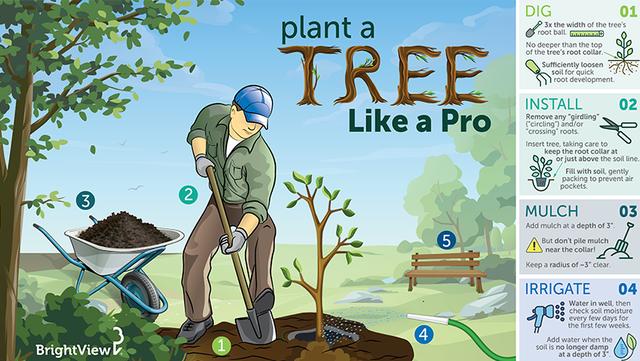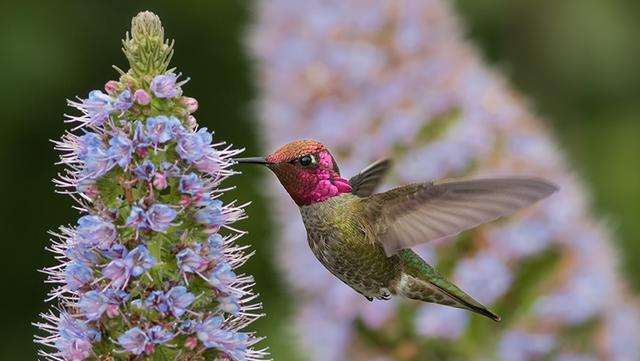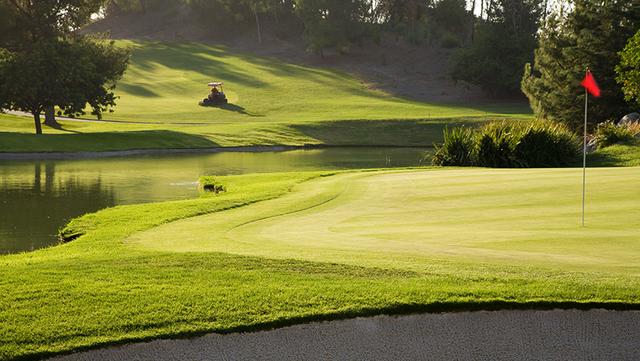When Can I Fertilize My Lawn? - Ask BrightView
Ask BrightView: Episode 4
BrightView turf expert Mac Briley explains when and how to properly fertilize your lawn, deciphering the numbers on the fertilizer bags, and how to choose the best one for you.
(For the full transcript, see below.)
Your Questions, Answered
We take your burning questions and give you the best advice, tips, steps, and more for your landscape needs in our Ask BrightView series.
Have you seen the latest episode yet?
Video Transcription
When can I fertilize my lawn and how do I choose the correct one?
MAC BRILEY, expert:
I'm Mac Briley, and as a turf expert, I'm often asked, "When should I fertilize my lawn and how should I go about fertilizing my lawn?"
We want to encourage you to know the basic facts on how to fertilize your lawn and how to do it safely.
When to Fertilize
The first thing that I want to encourage to everybody is to make sure you're fertilizing your lawn when your grass is actively growing. We're going to be adding nutrients to your lawn, so your lawn should be actively hungry and feeding when we're adding those nutrients to make sure that the lawn makes the best use of them at that particular point in time.
Amount of Fertilizer
The best way to read the fertilizer label is to certainly know the big keys that you're looking for. Each and every bag of fertilizer is going to tell you how many square feet it covers and that's a very important factor. You need to know how large your lawn is and then you need to buy the correct amount of fertilizer - never not enough, but never too much also. Find out how many square feet the bag of fertilizer will cover.
You want to measure your lawn and find out how many bags do you need to put out first off. We never want to put too much fertilizer on a lawn. That's not going to be good for our environment. We only want to put on our lawn what our lawn can possibly feed on.
Deciphering the Numbers
The next thing that's very important is to make sure we understand the three numbers on the bag. On this bag here, we have 24-0-11. The '24' stands for the amount of nitrogen, the '0' tells us we have no phosphorous in this bag, and the '11' tells us how much potassium is in the fertilizer bag. The reason that's so important to us is because your local AG Extension agent is going to tell you how many pounds of nitrogen you can apply safely to your lawn per year, and it's going to be very key that you know this.
How do I find out how many pounds of nitrogen are in this bag? Let's take this 50-pound bag and multiply it by 0.24 and it's going to tell us that there are 11 pounds of nitrogen in this bag. If you always follow how many square feet in this particular bag of fertilizer treat, you won't go wrong and you'll be able to fertilize your lawn responsibly and safely.
Applying the Fertilizer
Now that we've determined how much fertilizer we need to use in your lawn, let's talk about how we apply it and when do we apply it. Make sure we're never fertilizing when we have a heavy rain storm coming. That's not going to be good when it's washing any fertilizer down into the roadways. Make sure we're always cleaning up after ourselves when we're done. Any fertilizer pellets that end up in our driveway or street need to be blown back into the grass. Make sure we're using a good quality broadcast spreader. We don't want to use the old drop spreaders that we may have grown up with because they tend to grind at the fertilizer pellets and they can damage them and we could lose the effectiveness of the fertilizer. If you live on a lake or a river, never fertilize within 10 feet of water. We do not want to risk any nutrients getting into our waterways whatsoever. Make sure that we're using slow-release fertilizers as well. They are beneficial to the environment and they lengthen out the process of the feeding for the grass.
If you live in a southern state, however, we don't want to use complete slow-release fertilizers for our last application of the year in the fall. We want to make sure that we're not releasing that fertilizer into November and December when the grass is not feeding as much. If you live up north and you have fescue, the opposite of that'll be true. You will will want to use that slow-release fertilizer at that point in time.
If we follow these basic rules, we will all be able to take care of our lawns in a very responsible and safe manner.




